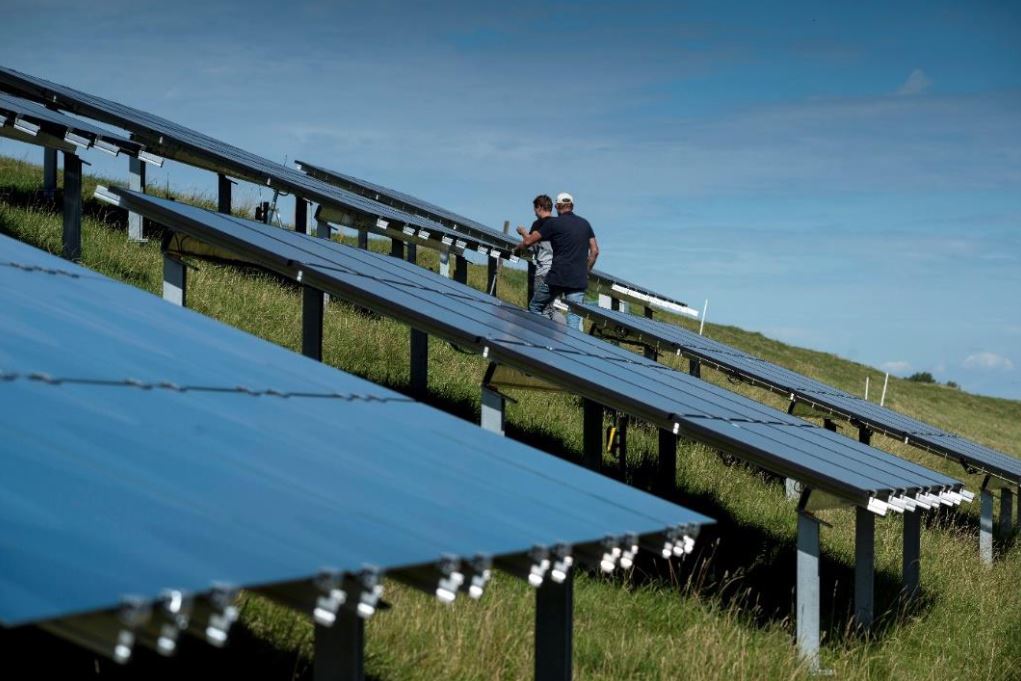A recent report by PV on Dykes – a Dutch project consortium that includes the Dutch Foundation for Applied Water Research (STOWA) and the Netherlands Organisation for Applied Scientific Research (TNO) – has assessed the technical viability and environmental costs of deploying ground-mounted solar along dikes in the Netherlands.
“We see that PV on paved dikes is most promising for the moment,” Maarten Dörenkämper, a researcher at TNO, told pv magazine. “On grass, it is more challenging, this needs further research to come to specific suitable configurations for grass dikes.”
The dikes and their surfaces represent an untapped opportunity to build solar plants in a land-scarce nation with a high population density. The Netherlands has approximately 17,000 km of dikes and a preliminary study has shown that they offer the potential to host 11 GW of PV systems, without occupying agricultural land.
In addition to serving as water barriers, dikes in the Netherlands are often used for recreation, especially for cycling. Over time, they have come to be seen as cultural-historical landscape elements.
“On top of the technical feasibility, it is very important to carefully investigate, where these systems can be placed. We have studied and identified with GIS analysis the most promising locations for these systems based on social acceptance factors,” Dörenkämper added. “Dikes located in a more industrial setting, are the ‘low hanging fruit' in terms of social acceptance.”
The scientists said in their report that they have tested four kinds of pilot-scale PV systems. The first was a 39.5 kW system with a fixed mounting structure on grass. The “TNO-Eurorail” system is deployed on grass and features a mounting structure on small piles installed in the ground at a limited depth, so that they do not cause major damage to the dikes.
The solar panels are placed at a height of between 80 cm and 1 m, which allows sheep to graze under the panels. The DC cabling between the mounting structure is buried without a conduit, as the use of casing pipes on a dike can cause tunnel formation.
The second installation, developed by Dutch technical service provider Delmeco, is a 6.8 kW PV system replacing the grass with a concrete element hosting each panel. The weight of the components and the bonding of the solar panels also prevents theft and makes the system vandalism-resistant.
The third demonstrator, built by Dutch developer Soltronergy, is a 5.4 kW installation featuring stainless steel cables mounted on steel yokes between concrete ballast blocks. It features lightweight plastic PV panels that are placed vertically at a height of 80 cm and are able to slightly rotate in line with the wind, the scientists said.
The fourth project, developed by Dutch landfill specialist Afvalzorg, is a 20 kW system placed on Solarbase, a dike-hardening material for the solar panels. The system is made of certified secondary raw materials and replaces the grass cover of the dike. The DC cabling is largely inaccessible and concealed under the panels, while the inverter is placed at the foot of the dike.
The scientists found that PV systems that are installed and fit well into current dike construction practices can be technically and economically feasible, without much additional research.
“Systems that are largely shading grass coverings have not yet proved suitable from a water safety point of view,” they said. “We have investigated different PV panel layout configurations, which allow different irradiation levels to reach the grass surface. However as the degradation of the grass cover is a slow process, we cannot come to the most optimum and definitely safe configuration at this point in time. We also observed that the systems are performing well from an electrical performance point of view and no direct erosion formation has been observed.”
The Dutch authorities are struggling to identify surfaces on which to deploy large-scale PV plants, due to the scarcity of land. In recent years, research institutes and private companies have tried to prove the feasibility of solar projects on non-agricultural land, including rooftops, road noise barriers, onshore and offshore water surfaces, and bike lanes.
This content is protected by copyright and may not be reused. If you want to cooperate with us and would like to reuse some of our content, please contact: editors@pv-magazine.com.




By submitting this form you agree to pv magazine using your data for the purposes of publishing your comment.
Your personal data will only be disclosed or otherwise transmitted to third parties for the purposes of spam filtering or if this is necessary for technical maintenance of the website. Any other transfer to third parties will not take place unless this is justified on the basis of applicable data protection regulations or if pv magazine is legally obliged to do so.
You may revoke this consent at any time with effect for the future, in which case your personal data will be deleted immediately. Otherwise, your data will be deleted if pv magazine has processed your request or the purpose of data storage is fulfilled.
Further information on data privacy can be found in our Data Protection Policy.